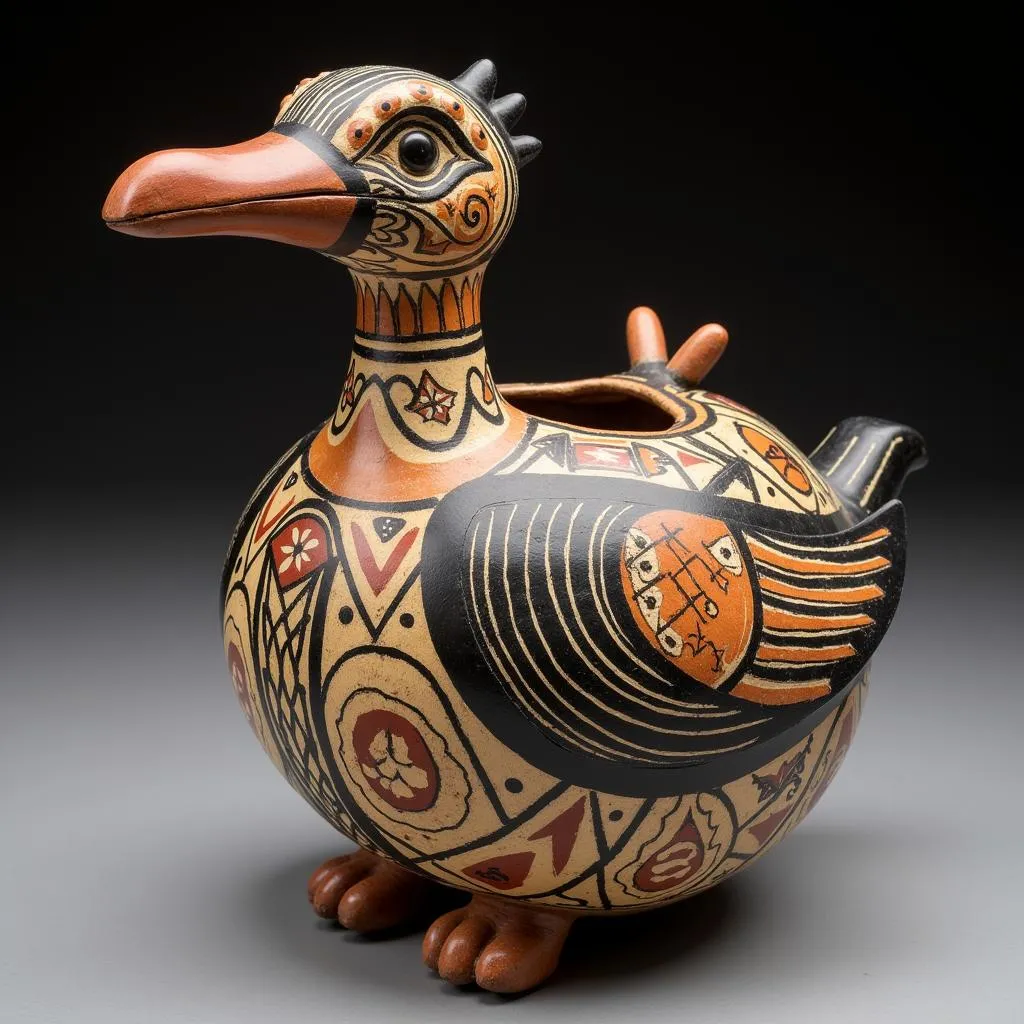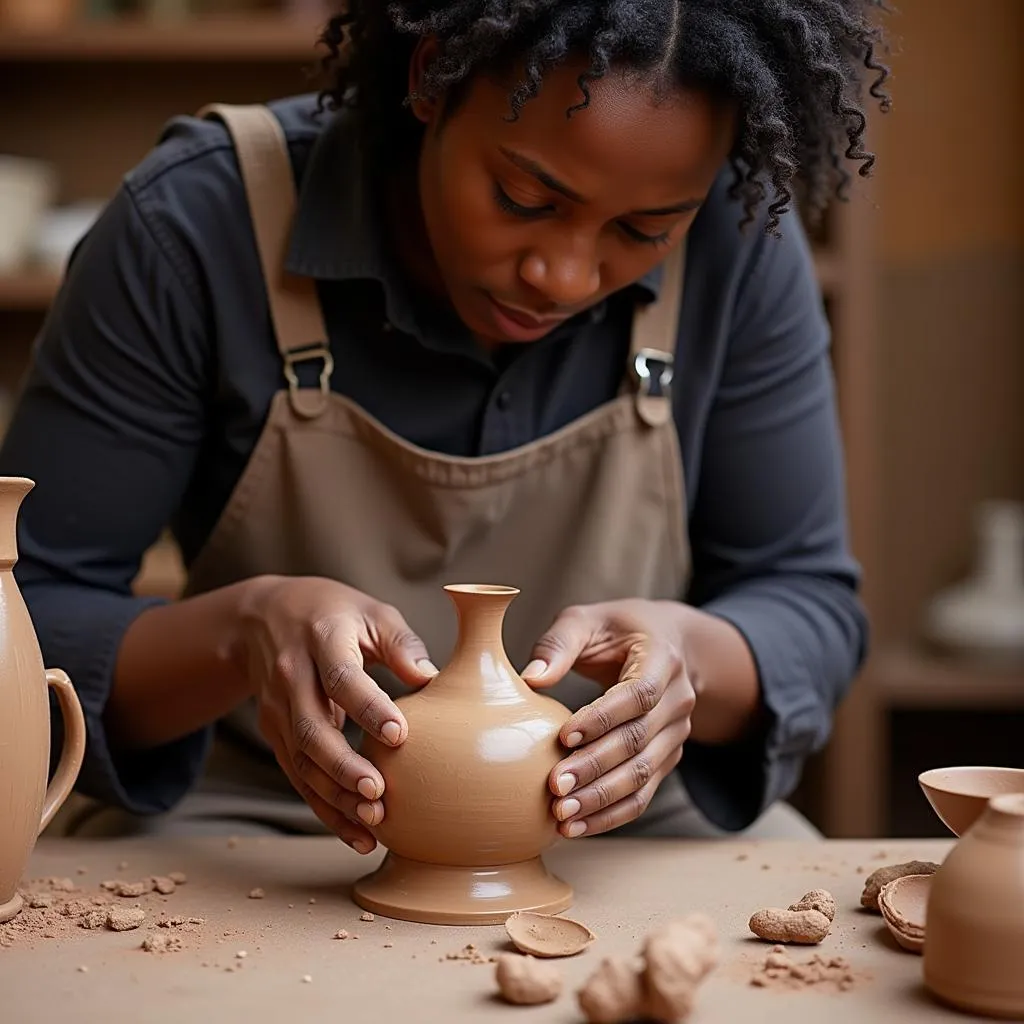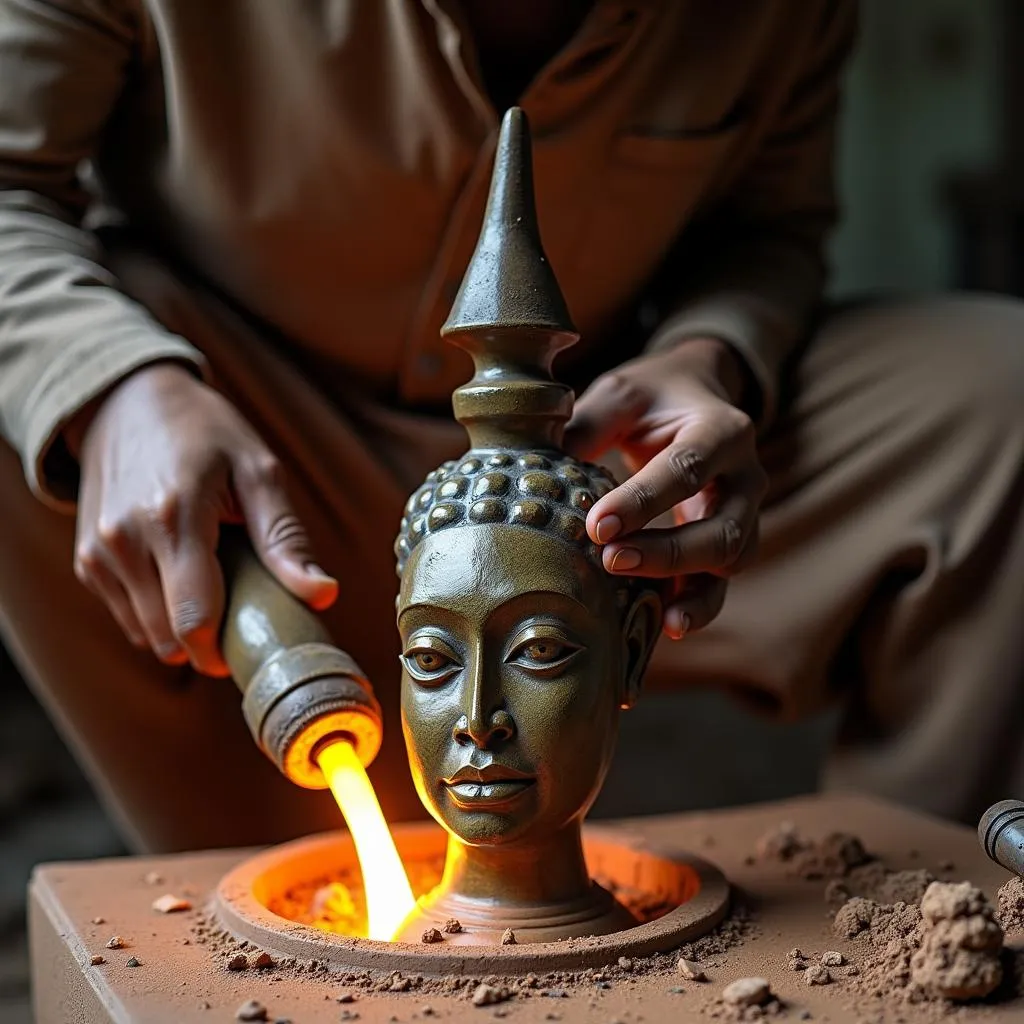Unraveling the Mystery of the African Kingfisher Vessel
The African Kingfisher Vessel, a ceramic art form steeped in tradition and symbolism, offers a captivating glimpse into the rich cultural tapestry of the Ashanti people of Ghana. These intricately crafted vessels, often adorned with the vibrant colors and motifs characteristic of Ashanti art, are not merely decorative objects but hold deep cultural and spiritual significance.
The Significance of the Kingfisher in Ashanti Culture
The kingfisher, a bird renowned for its striking plumage and agile fishing skills, holds a revered place in Ashanti cosmology. It is seen as a symbol of prosperity, abundance, and spiritual guidance. The Ashanti people believe that the kingfisher’s ability to navigate between the realms of water and air represents a bridge between the physical and spiritual worlds.
 An Ashanti kingfisher vessel with intricate patterns
An Ashanti kingfisher vessel with intricate patterns
The Art of Crafting a Kingfisher Vessel
Creating an African kingfisher vessel is a meticulous process passed down through generations of Ashanti artisans. These skilled craftspeople employ traditional techniques, using locally sourced clay and natural pigments to mold and shape the vessels. The process begins with carefully shaping the clay into the distinctive form of a kingfisher, complete with a long, pointed beak, outstretched wings, and a plump body.
Once the basic shape is achieved, the artisans meticulously etch intricate patterns and designs onto the vessel’s surface. These patterns often depict traditional Ashanti symbols, such as the “adinkra,” which represent various proverbs and concepts central to Ashanti philosophy.
 Ashanti artisan shaping clay for a kingfisher vessel
Ashanti artisan shaping clay for a kingfisher vessel
The Use and Symbolism of Kingfisher Vessels
African kingfisher vessels serve both practical and ceremonial purposes within Ashanti culture. Traditionally, these vessels were used to store and pour libations, offerings of drinks presented to honor ancestors and deities. The act of pouring libations is a sacred ritual in Ashanti culture, believed to facilitate communication with the spirit world and seek guidance and blessings.
Beyond their ritualistic use, kingfisher vessels are also prized as objects of adornment and status. They are often displayed prominently in homes, palaces, and shrines as symbols of wealth, prestige, and spiritual connection. The vibrant colors and intricate designs of these vessels serve as a testament to the artistic skill and cultural heritage of the Ashanti people.
The Enduring Legacy of African Kingfisher Vessels
Today, African kingfisher vessels continue to captivate art enthusiasts and cultural connoisseurs worldwide. They stand as a testament to the enduring artistic traditions and rich cultural heritage of the Ashanti people. These vessels serve as a tangible link to the past, preserving and transmitting Ashanti beliefs, values, and aesthetic sensibilities to future generations.
“The kingfisher vessel is not just a container but a vessel of stories,” says Kwame Ansah, a renowned Ashanti art historian. “It carries within its form the wisdom of our ancestors, the beliefs that have shaped our worldview, and the artistry that defines our cultural identity.”
 Collection of African kingfisher vessels in a museum
Collection of African kingfisher vessels in a museum
The African kingfisher vessel, with its intricate beauty and profound symbolism, remains an enduring emblem of Ashanti culture, offering a captivating window into the artistic ingenuity and spiritual depth of one of Africa’s most influential civilizations.



